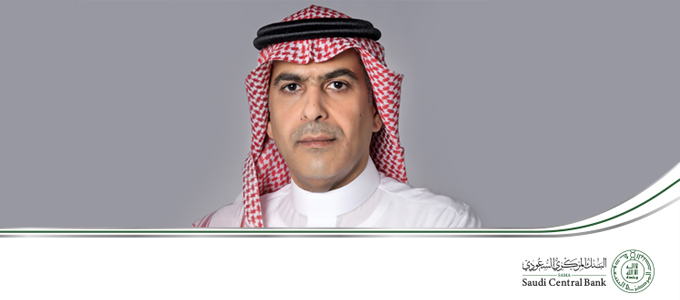H.E. the Governor Interview with South China Morning Post
Page Content

The Saudi Central Bank (SAMA) is looking to strengthen its connections with the People’s Bank of China (PBOC) via bilateral dialogues, collaborations in multilateral forums.
Bilateral dialogues can help the two nations foster mutual understanding by providing a platform to exchange “views, experiences, and policy insights,” the Governor said.
Saudi Arabia’s central bank is seeking stronger ties with the monetary authorities of mainland China and Hong Kong, as the kingdom prepares to transition from an oil-dependent economy to one focused more on infrastructure development and attracting foreign capital.
The Saudi Central Bank is looking to strengthen its connections with the People’s Bank of China (PBOC) via bilateral dialogues, collaborations in multilateral forums, as well as partnerships in international organizations, stated Governor Ayman Al-Sayari.
Bilateral dialogues can help the two nations foster mutual understanding by providing a platform to exchange “views, experiences, and policy insights,” the governor said in an interview with South China Morning Post, calling on central bankers on both sides to engage in dialogues at various levels, including high-level meetings and working groups.
The governor mentioned that the two central banks can also engage in multilateral forums such as the Group of 20 nations (G20). “By adopting a collaborative and constructive approach in these forums, the two central banks can work together to address shared challenges and promote joint initiatives,” the Governor added.
The Governor pointed out that a cooperative and consensus-driven approach will allow Saudi Arabia and China to advocate reforms and initiatives that address the needs of emerging and developing economies.
The governor also encouraged Chinese banks to grow and expand in Saudi Arabia, highlighting the importance of foreign investment and fintech-driven financial inclusion in promoting Saudi Vision 2030, a government programme aimed at reducing Saudi Arabia’s dependence on fossil fuels and diversifying its economy. Bank of China opened its first branch in Riyadh last month, the second Chinese lender to establish a presence in the kingdom.
“As of today, there are two branches of Chinese banks in Saudi Arabia, and we welcome this growth, and we will continue to support the financial sector, increase efficiency of transactions, and promote innovative financial solutions for financial inclusion,” the governor noted.
As part of its effort to promote financial inclusion through fintech and digital banking, SAMA is also seeking more collaborations on digital assets.
The Governor clarified stated that the Saudi Central Bank already has a track record of collaborations in this area citing a recent memorandum of understanding signed by SAMA and the Hong Kong Monetary Authority (HKMA), the island’s de facto central bank, to share knowledge and expertise in areas relating to regulatory issues, laws and policies, as well as best practices in financial innovation.
“This will help to strengthen collaboration in several common areas, including fintech,” the Governor noted.
The remarks came as the global economy continued to see consumption-driven growth, while manufacturing remained sluggish. Meanwhile, inflation was falling slowly and steadily as a result of monetary tightening.
Although most central banks were maintaining a hawkish stance on their monetary policies to reign in inflation, the impact of rates increase “has been modest on global growth,” noted the governor. The International Monetary Fund (IMF) revised its 2023 global real economic growth forecast upwards by 0.2 percentage point to 3 per cent, due to falling inflation and receding stress on the banking sector.
However, the IMF left its forecast for 2024 unchanged at 3 per cent. The growth forecast between 2023 and 2024 remained well below the annual average of 3.8 per cent seen in between 2000 and 2019, due to weaker manufacturing in advanced economies.
The outlook for emerging economies, on the other hand, was broadly stable, with growth of 4 per cent expected in 2023 and 4.1 per cent in 2024.
The Governor pointed out that Saudi Arabia saw “robust economic growth” of 8.7 per cent in 2022, making it the fastest growing economies among G20 members.
“Other economic fundamentals are strong, with inflation remaining low and stable at 2 per cent in August 2023, and with an average around 2.7 per cent since the beginning of 2023,” H.E. added. “This is partly attributed to government policies such as energy price caps. In addition, the strength of the Saudi Riyal has helped mitigate the impact of imported inflation.”
“The outlook for the economy in 2023 remains favourable, although a moderation in growth rates from recent highs is expected given recent changes in the oil and gas market and inflation is projected to be slightly higher than in 2022,” the governor said. “Recent independent forecasters, including the IMF, have stated that they expect strong investment rates to support strong non-oil GDP growth rates.”
Aside from attracting foreign capital and promoting financial inclusion, the Saudi Vision 2030 promotes infrastructure investment, tourism, the privatisation of state-owned companies, as well as investments into tech sectors.
The
Public Investment Fund (PIF) plays a pivotal role in executing mega projects as
part of Vision 2030, while the National Transformation Program (NTP) sets
sector-specific strategic objectives and initiatives, with a focus on key areas
like education, healthcare, and infrastructure, tracking progress across
multiple sectors, according to the governor.
Governor
Enterprise Keywords

